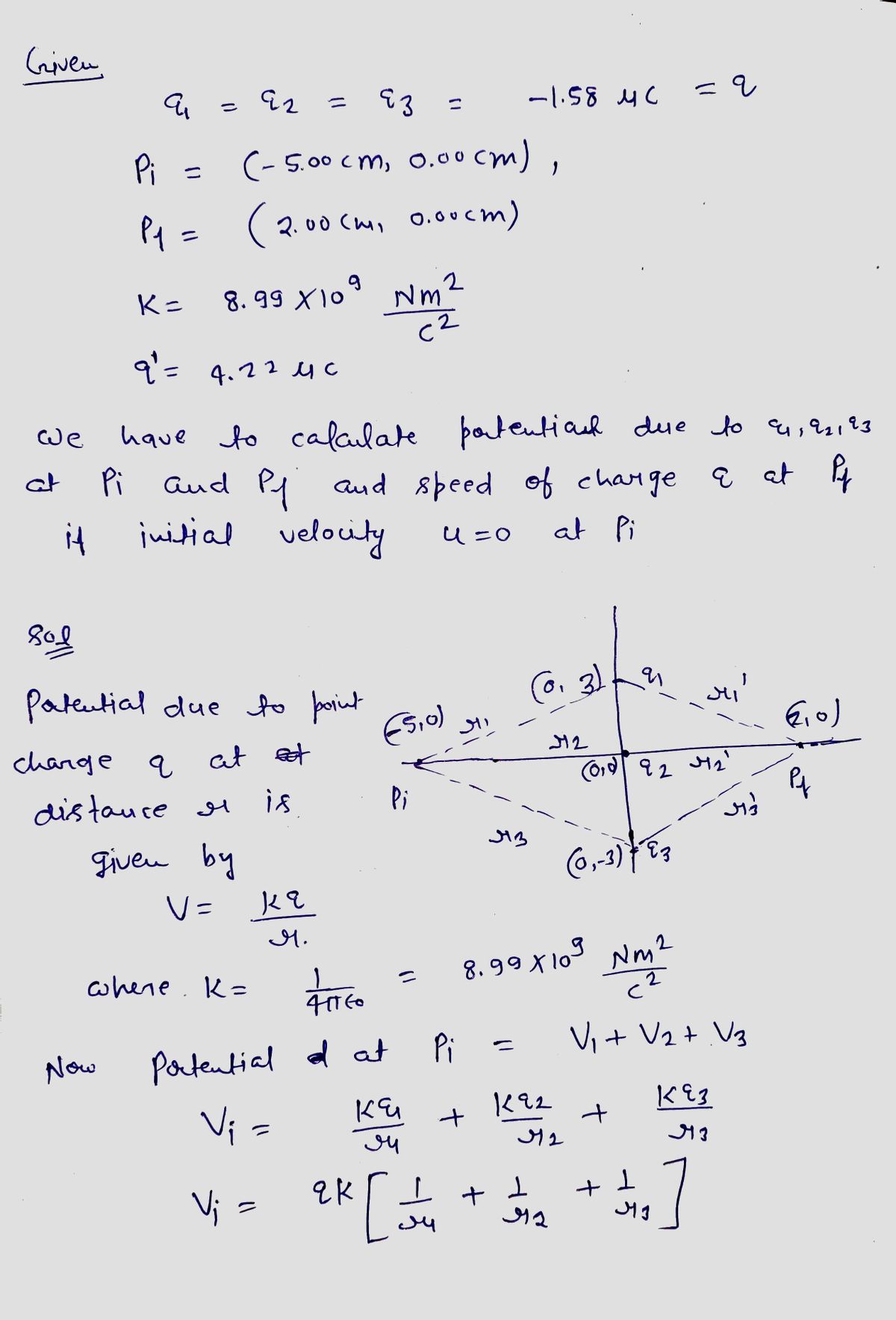Question 2: Electric Potential from Point Charges (a) Three charges lie on the y- axis of a coordinate system at points (0.00cm, 0.00cm) (0.00cm, -3.00cm) and (0.00cm, 3.00cm). Each charge has a value of -1.58 μC. Find the electric potential at points p; = (-5.00cm, 0.00cm) and pf = (2.00cm, 0.00cm). (b) If a particle of mass 61.7 g and charge q = 4.22 µC were to start at rest at point p; and move to point p would its final speed be? what k = 8.99 x 10⁹. Answer (a) Potential at Pi (a) Potential at Pf b) Speed Nm² C² Pi HHOHOHOHHH Pf
Question 2: Electric Potential from Point Charges (a) Three charges lie on the y- axis of a coordinate system at points (0.00cm, 0.00cm) (0.00cm, -3.00cm) and (0.00cm, 3.00cm). Each charge has a value of -1.58 μC. Find the electric potential at points p; = (-5.00cm, 0.00cm) and pf = (2.00cm, 0.00cm). (b) If a particle of mass 61.7 g and charge q = 4.22 µC were to start at rest at point p; and move to point p would its final speed be? what k = 8.99 x 10⁹. Answer (a) Potential at Pi (a) Potential at Pf b) Speed Nm² C² Pi HHOHOHOHHH Pf
Related questions
Question

Transcribed Image Text:## Question 2: Electric Potential from Point Charges
### Problem Statement:
(a) Three charges lie on the \( y \)-axis of a coordinate system at points \((0.00 \, \text{cm}, 0.00 \, \text{cm})\), \((0.00 \, \text{cm}, -3.00 \, \text{cm})\), and \((0.00 \, \text{cm}, 3.00 \, \text{cm})\). Each charge has a value of \(-1.58 \, \mu \text{C}\). Find the electric potential at points \( p_i = (-5.00 \, \text{cm}, 0.00 \, \text{cm}) \) and \( p_f = (2.00 \, \text{cm}, 0.00 \, \text{cm}) \).
(b) If a particle of mass \( 61.7 \, \text{g} \) and charge \( q = 4.22 \, \mu \text{C} \) were to start at rest at point \( p_i \) and move to point \( p_f \), what would its final speed be?
\( k = 8.99 \times 10^9 \, \frac{\text{Nm}^2}{\text{C}^2} \)
### Diagram Explanation:
The diagram contains a coordinate system with three charges labeled \( q_1 \), \( q_2 \), and \( q_3 \) placed along the y-axis.
- \( q_1 \) is at the origin \((0, 0)\).
- \( q_2 \) is below \( q_1 \) on the y-axis at \((0, -3)\).
- \( q_3 \) is above \( q_1 \) on the y-axis at \((0, 3)\).
Points \( p_i \) and \( p_f \) are marked on the x-axis. \( p_i \) is left of the origin at \((-5, 0)\) and \( p_f \) is right of the origin at \((2, 0)\).
### Answer:
| (a) Potential at \( p_i \) | |
|--------------------------|---|
| (a) Potential at \(
Expert Solution
Step 1

Step by step
Solved in 2 steps with 2 images
